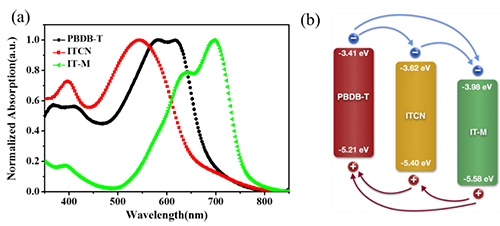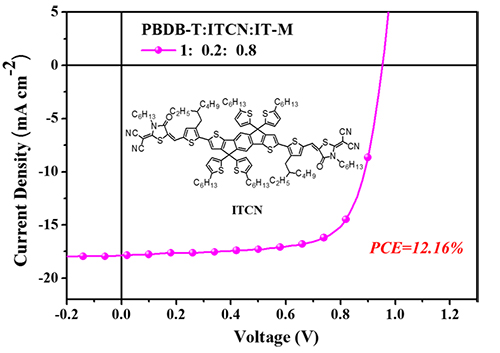At present, the energy crisis and environmental pollution caused by the large-scale use of non-renewable fossil fuels are becoming more and more serious, and the green and environmentally friendly solar cell technology has received widespread attention. Among them, organic solar cells have the advantages of flexibility, translucency, easy large-area preparation, and color erosion. They can also provide pleasant visual enjoyment while satisfying people's power needs, and they are very strong in portable electronic products and photovoltaic buildings. The application potential has become a hot topic in the new energy field.
The organic photoelectric materials and devices research team led by Ge Ziyi, a researcher at the Ningbo Institute of Materials Technology and Engineering, Chinese Academy of Sciences, has made progress in the field of organic solar cells. Following the development of a low-cost non-conjugated small-molecule electrolyte that can be wet processed and used as a cathode interface layer in 2015 to break the 10% efficiency bottleneck of single-junction organic solar cells, the interface of organic solar cells has continued to be developed in depth and systematically. Research work to develop a series of new non-conjugated interface materials, hyperbranched polymer interface materials, and low-cost and environmentally friendly interface materials.
Recently, the research team has made progress in high-efficiency non-fullerene organic solar cells, designed and synthesized a new multi-ring-shelled small molecule acceptor material ITCN, and has good energy level matching with non-fullerene active layer systems. Comparing with the absorption spectrum, the energy conversion efficiency of the single-junction ternary non-fullerene organic solar cell is 12.16%. The relevant research results were titled "Ternary Nonfullerene Polymer Solar Cells with 12.16% Efficiency by Introducing One Acceptor with Cascading Energy Level and Complementary Absorption". They were published on Advanced Materials and applied for Chinese invention patents.
The research work was supported by the National Natural Science Foundation of China, the National Key Research and Development Program, the Zhejiang Outstanding Youth Fund, the Ningbo Science and Technology Innovation Team, the Cross Innovation Team of the Chinese Academy of Sciences, the Frontier Science Key Research Project of the Chinese Academy of Sciences, and the Key International Cooperation Project of the Chinese Academy of Sciences.

Figure 1. (a) Absorption spectra of ITCN, IT-M and PBDB-T, (b) Schematic diagram of the energy levels and charge transitions of the ITCN/IT-M/PBDB-T photoactive layer system.

Figure 2. Efficiency curves of ITCN/IT-M/PBDB-T ternary non-fullerene organic solar cells
Yantai Ciso Lubrication Technology Co.,LTD , https://www.cisolubrication.com